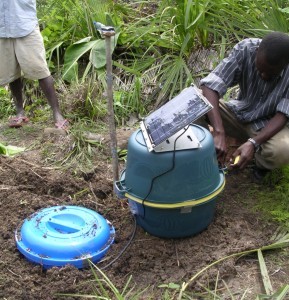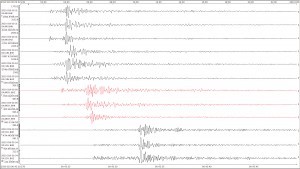In early May, Scott Nooner and I returned to Malawi to retrieve our seismic equipment and finally lay eyes on the data recorded over the last 4 months. Picking them up was vastly easier than putting them out. In contrast to the days studying out-dated maps and driving down dirt roads looking for sites, and hours of hard labor under the hot African sun digging holes and constructing vaults, recovery required only minutes at each site to shut down the equipment and safely stow it in plastic cases in the back of our rented truck. It took us about a day to recover all the equipment that we spent a week installing. Since we recovered the seismic equipment so quickly, we had time to collect new GPS data, too.
Although retrieving the seismic equipment proved easy, transporting numerous 50-lb boxes from one side of the world to the other is not trivial, as we discovered during the deployment. Our hasty departure in January prevented us from obtaining US customs documentation that would have simplified the export/import process, and our seismic equipment had to return from Malawi the way it came in – as checked luggage. We wrested ten ~50-lb pieces of baggage to the check-in counter at the Lilongwe airport, and handed over all of our remaining dollars plus a fistful of Malawi Kwacha for excess baggage fees. Checking in for each subsequent leg of the trip, we braced ourselves to part with more money. Even for the few pieces of equipment that we transported back to the US via a commercial shipper, we faced interesting challenges. The Karonga DHL office lacks a scale, so shipping agents and our Geological Survey colleagues made competing guesses as to the weight of our boxes and compromised on the average when charging us shipping fees.


